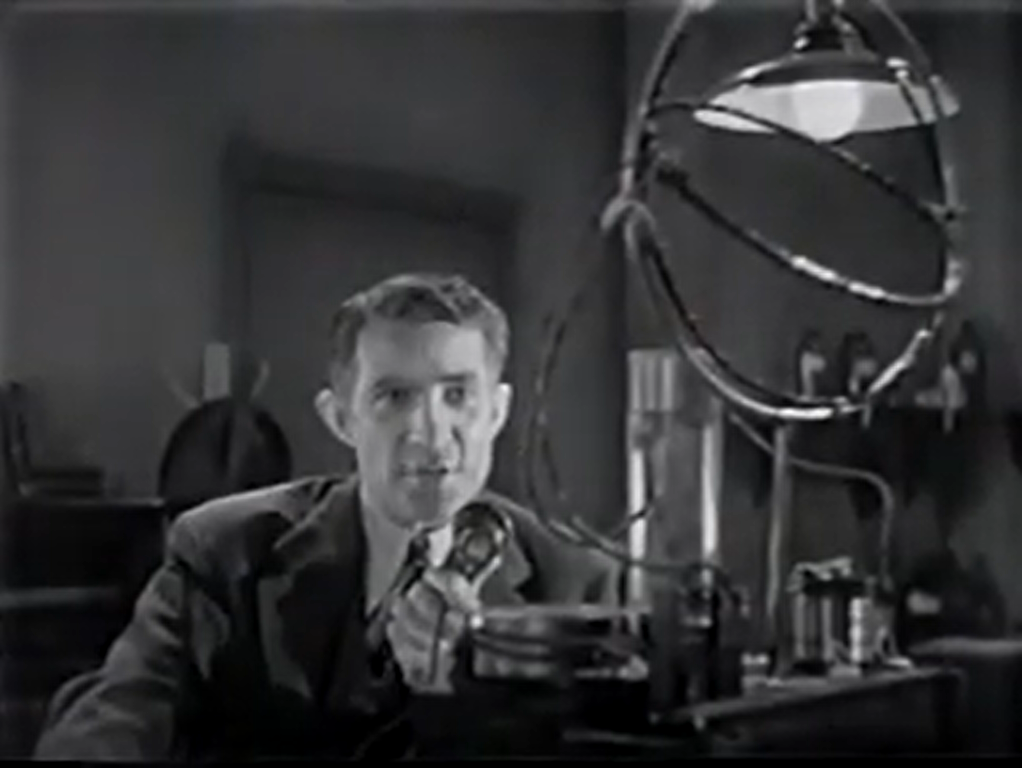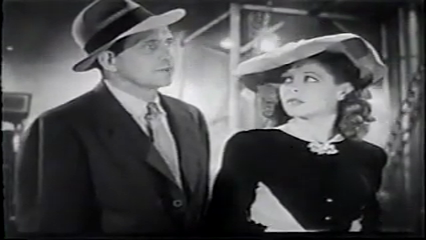
#418 – The Secret Code (1943)
The Secret Code (1943)
Film review #418
Film director: Spencer G. Bennet
SYNOPSIS: Dan Barton, a police officer, is assigned by his boss to infiltrate a Nazi spy ring operating in the country. To do this, Dan is framed for a murder and discharged from the police service, but before his Boss can tall anyone else what his mission is, he is murdered, which means that no one knows that he is undercover. Dan begins to try and gain the trust of the Nazi spies, while also donning the mask of the “Black Commando” to sabotage the saboteurs.
THOUGHTS/ANALYSIS: The Secret Code is a 1943 movie serial comprised of fifteen chapters. The serial opens up with Dan Barton, a police officer, being assigned to go undercover to infiltrate a Nazi spy ring operating somewhere in the city. He is framed for a murder and discharged from the police to give himself a cover story, while only his boss knows the true story. However, when Dan’s boss is killed himself, there is no one else who knows about the undercover operation, and so he must bring down the spy ring without any help from the police, who are looking to arrest him. He does get some help. however, from his friend in the police Pat Flanagan, and a reporter whose curiosity gets her involved. Dan joins the Nazi spies on various operations, but also secretly dons an all-black mask and suit, calling himself the “Black Commando,” and sabotaging their operations with the knowledge he has of them. This serial does change up some of the typical setups of the format; most notably where usually the masked villain is usually one of the heroes allies, here the masked hero is one of the villain’s seeming allies. The rest of the story setups are pretty standard though. The main objective for Barton is to obtain the “secret” code that the Nazis are using to send messages to their spies. The Nazis get their messages through a large light-up screen, where squares with numbers flash up on the screen and they are able to decrypt them for orders. The theme of codes runs through a lot of the story, showing how spies might receive their instructions through various coded ways, which I’ll discuss later on.
What makes the serial unique from all of the other war-time serials I’ve seen is that they actually refer to the villains as Nazis, while usually they are referred to as simply “a foreign power” (the same holds true for when the villains are Japanese but that’s more obvious when the actors are adorned in make-up to “look” Japanese). On the screen where their orders are given, a swastika or picture of Hitler himself is shown before the message begins, as the spies salute him and proclaim “Heil, Hitler” in authentic Nazi style. One of the little things I noticed in one of these scenes where they are filmed from behind, one of the actors clearly has his fingers crossed behind his back. Obviously all the actors are American and wouldn’t really salute the Nazi leader, and I wonder whether the actor knew he was being shot from the back or front; either way, these serials were pumped out in about a month, so there was never any time for re-shoots to edit out these hiccups. It should be of no surprise that this serial is a big chunk of war-time propaganda, attempting to educate the American public on the tactics of spies and the codes they use. The use of referencing the actual Nazis also puts things into focus with regards to who the enemy is.
The characters themselves are pretty bland. Barton is a typical main lead, his friend Pat Flanagan is the most stereotypical Irish friend character imaginable. His go to line is that everything that happens to him is the “luck o’ the Irish” is just a replacement for any kind of actual character, and he only seems to have an Irish accent when he needs to reference the fact that he is Irish. The female reporter is the typical sole female token character who is always either a reporter or a secretary, since apparently those are the only two jobs a woman in the 40′s could do, or could be seen to do on film anyway. The Nazi villains are also fairly bland, and the consistency of their accents fluctuates wildly. The masked identity of the Black Commando is not noteworthy, as it’s just a completely black suit and mask, without any unique characteristics or abilities. The acting across the characters is unremarkable, although there’s a few moments where actors clearly miss their cue and say their lines a little too late. All in all, nothing stands out in terms of the characters.
Perhaps the most unique and bizarre aspect of this serial is at the end of the each chapter. There, we are treated to a scene in the office of U.S. “army intelligence officer” Henry Burton, who speaks to the viewer directly about the different types of code enemy spies use, and what the public might be on the look out for. First of all, he is clearly not an actual member of the U.S. army, but another actor. Even if you don’t know this from looking up the credits, you can tell he fumbles his lines often when he actually has to decrypt the code on the blackboard, even though he probably has the answers offscreen, he hesitates when he has to do some actual decoding, and sometimes even says the wrong thing while writing the right answer on the board. The segment shows a number of interesting ways of making and breaking codes, but some of them are a little far-fetched, such as the one about the contents of a spy’s pockets forming a code, but there was no way you could have deduced the order the items should have been in order to decrypt it. It’s a nice bit of trivia, but it’s application to reality (like most propaganda) is dubious.
Overall, The Secret Code offers a few different takes on serial tropes, but is let down by lacklustre characters. The context of a war-time serial means it is bloated with propaganda and messaging, but is able to be much more direct with it than other serials at least. It’s unique enough that it might be worth a watch for serial enthusiasts, but it’s definitely a product of its time.










